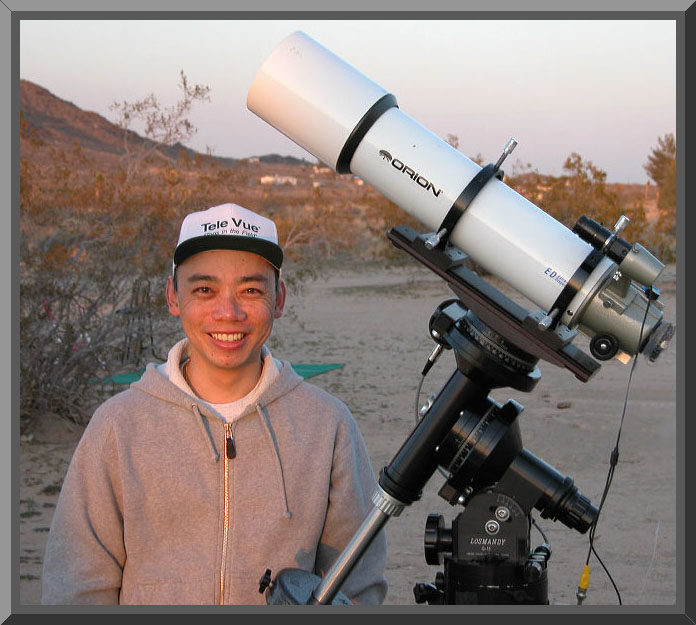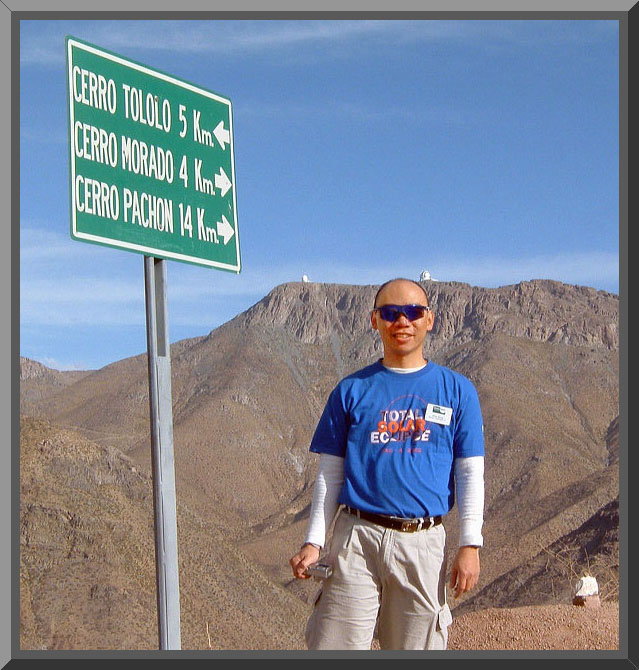|
Michael A. Stecker |
|
Alson Wong, M.D.
Rancho Cucamonga, California U.S.A. |
|
My first observing instrument was a
pair of 7x35 Bushnell binoculars which I received as a gift. The images
weren't very sharp and were quite astigmatic, but it was enough to get me
started on objects like the Moon, M31, the Pleiades, and Hyades. I bought
my first telescope, an Edmund Astroscan, during my second year of college
at the University of California, Irvine in 1982-83. This scope was a nice
instrument for learning how to find and observe objects through a
telescope. With the Astroscan, I was able to find and observe nearly all
of the Messier objects. During the fall
quarter of 1983, I took a course at UCI in observational astronomy taught
by Dr. Wallace Tucker, who was then splitting his time between UCI and the
Harvard-Smithsonian Center for Astrophysics. The next quarter I became a
teaching assistant for the course, which gave me unlimited access to the
school's observatory, which contained a C-14, C-8, and C-5. In 1985 I
attended my first big star party, the
Riverside Telescope Makers Conference
near Big Bear, California.
After graduating with a Bachelor of Science in Biological Sciences, I
started medical school at UCI. The time demands of medical school left me
little time for observing. While doing my residency in pediatrics at UCLA
Medical Center, I bought my second telescope, a 10" Coulter Odyssey. My
first opportunity to use this scope under a really dark sky was at the
1991 Texas Star
Party, where I was astounded
at how clear and dark the skies were. It was at the 1991 TSP where Barbara
Wilson and Steve O'Meara made the first visual observations of a
gravitational lens through an amateur telescope. I happened to walk past
Barbara's scope just as Steve was stepping down from the ladder, but I was
having so much fun looking through my new scope and through Brian Skiff's
6" Astro-Physics refractor that I didn't stop to take a look (one of my
biggest astronomical regrets). In 1993 I started
my current job with the Southern California Permanente Medical Group, and
in 1995 I saw my first total solar eclipse on a cruise in the South China
Sea.. In 1997, as
Comet Hale-Bopp
became increasingly
prominent, I started piggyback astrophotography and began to observe with
the
Riverside Astronomical Society,
which I joined later that
year. I was chosen as Vice President of the RAS for 1999. In 1998, I
began taking prime focus film shots with my
C-9.25,
and in 2002 I started CCD
imaging with an ST-10XME.
Sky & Telescope |
|
|
|
Alson traveled to Chile in November 2003
before flying over Antarctica for a solar |
|
|

